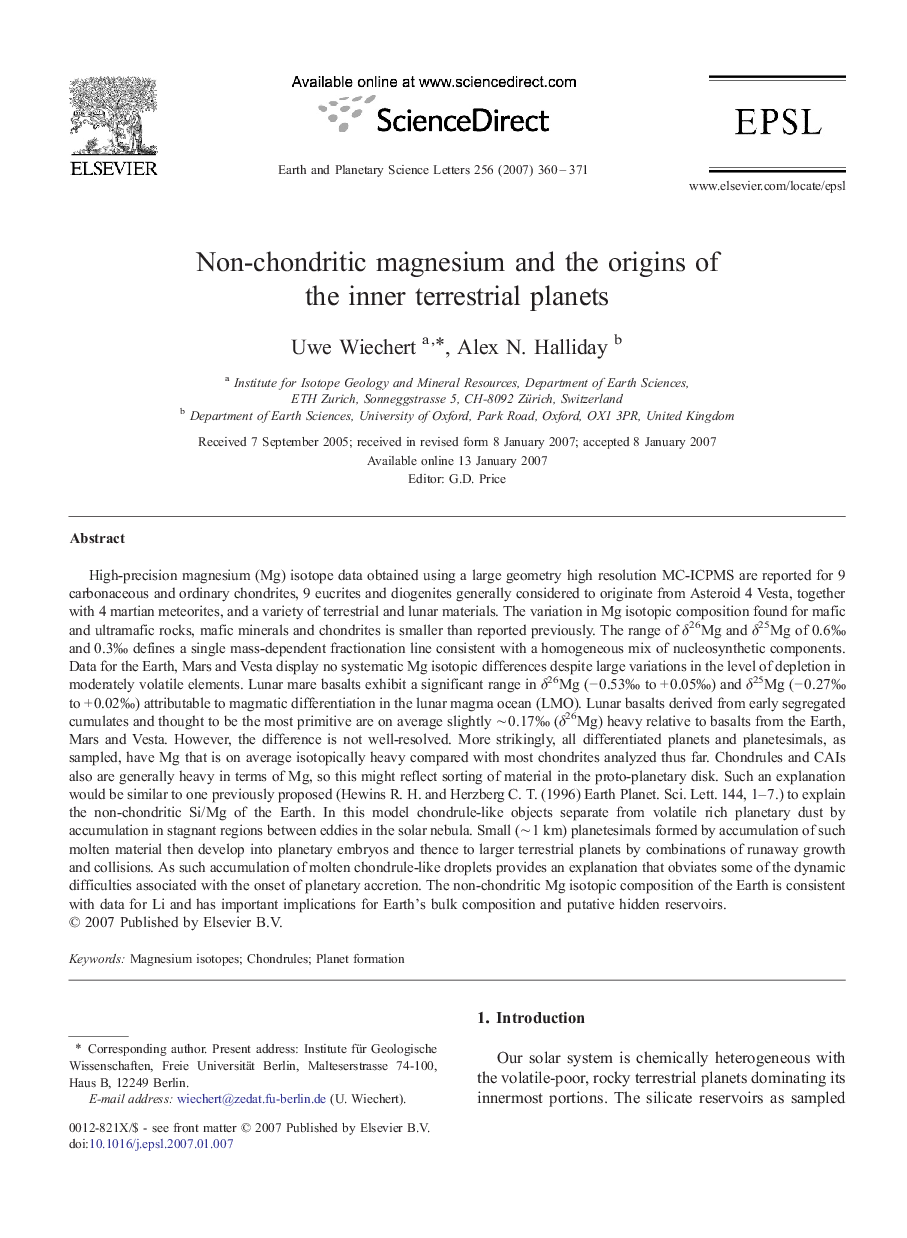| کد مقاله | کد نشریه | سال انتشار | مقاله انگلیسی | نسخه تمام متن |
|---|---|---|---|---|
| 4680586 | 1634922 | 2007 | 12 صفحه PDF | دانلود رایگان |

High-precision magnesium (Mg) isotope data obtained using a large geometry high resolution MC-ICPMS are reported for 9 carbonaceous and ordinary chondrites, 9 eucrites and diogenites generally considered to originate from Asteroid 4 Vesta, together with 4 martian meteorites, and a variety of terrestrial and lunar materials. The variation in Mg isotopic composition found for mafic and ultramafic rocks, mafic minerals and chondrites is smaller than reported previously. The range of δ26Mg and δ25Mg of 0.6‰ and 0.3‰ defines a single mass-dependent fractionation line consistent with a homogeneous mix of nucleosynthetic components. Data for the Earth, Mars and Vesta display no systematic Mg isotopic differences despite large variations in the level of depletion in moderately volatile elements. Lunar mare basalts exhibit a significant range in δ26Mg (− 0.53‰ to + 0.05‰) and δ25Mg (− 0.27‰ to + 0.02‰) attributable to magmatic differentiation in the lunar magma ocean (LMO). Lunar basalts derived from early segregated cumulates and thought to be the most primitive are on average slightly ∼ 0.17‰ (δ26Mg) heavy relative to basalts from the Earth, Mars and Vesta. However, the difference is not well-resolved. More strikingly, all differentiated planets and planetesimals, as sampled, have Mg that is on average isotopically heavy compared with most chondrites analyzed thus far. Chondrules and CAIs also are generally heavy in terms of Mg, so this might reflect sorting of material in the proto-planetary disk. Such an explanation would be similar to one previously proposed (Hewins R. H. and Herzberg C. T. (1996) Earth Planet. Sci. Lett. 144, 1–7.) to explain the non-chondritic Si/Mg of the Earth. In this model chondrule-like objects separate from volatile rich planetary dust by accumulation in stagnant regions between eddies in the solar nebula. Small (∼ 1 km) planetesimals formed by accumulation of such molten material then develop into planetary embryos and thence to larger terrestrial planets by combinations of runaway growth and collisions. As such accumulation of molten chondrule-like droplets provides an explanation that obviates some of the dynamic difficulties associated with the onset of planetary accretion. The non-chondritic Mg isotopic composition of the Earth is consistent with data for Li and has important implications for Earth's bulk composition and putative hidden reservoirs.
Journal: Earth and Planetary Science Letters - Volume 256, Issues 3–4, 30 April 2007, Pages 360–371